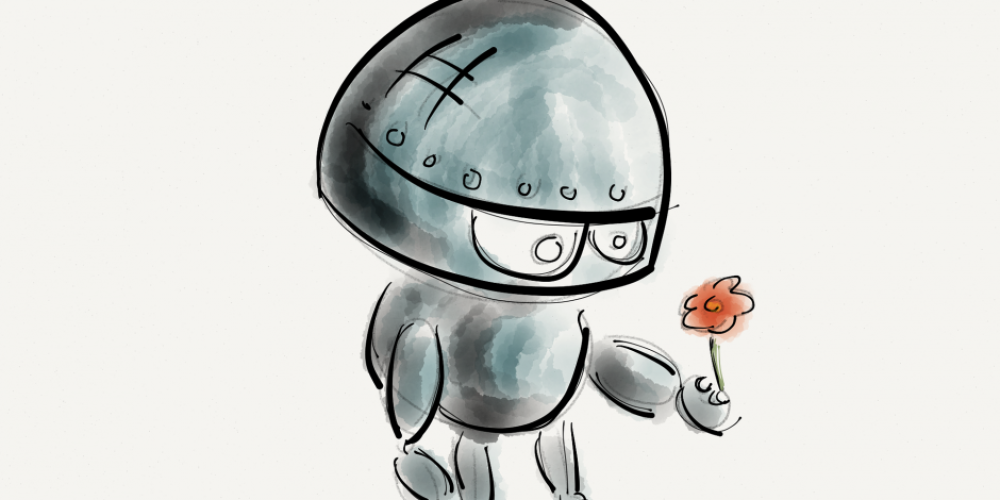Evoking emotion in an increasingly automated world?
03 May 2017

Who on earth are you?
I have no idea what your name is, where you are from, or what makes you tick…
Which, to be fair, makes it pretty hard to write this piece. How can I make it relate or be of interest to you?
There is a small chance I know you. If I do, I hope you’re well. I’m sure we’re long overdue a beer, so give me a call - I’m buying.
For the sake of propriety I’ll continue under the assumption that you are a professional working in Marketing, Advertising, Digital, Creative, Media or something equally fascinating (delete as appropriate). And, chances are you’ve been involved in some sort of data-driven campaign recently - a retargeted ad programme? Or a mass email communication, perhaps? Something automated, anyway.
Marketing Automation is everywhere. And it’s not necessarily a bad thing. As marketers, creatives and brand owners, what better way to get your message out there? Low effort and low costs that result in maximum exposure and (hopefully) returns. But for me, that is exactly where the problems can begin.
Communications become very functional when brands are broadcasting so frequently and especially when operating at high volume. It is all-too-easy to become complacent and create blanket one-size-fits-all approaches to messaging, content and design. Understanding who your customers are by interrogating your data is of paramount importance in modern marketing. Creating customer profiles or portraits with which to target will help refine your message for maximum impact.
As a Creative Director, this kind of insight into audiences is like gold dust. It forms the crux of the creative brief and steers everything from the creative strategies to copy approach, design and tech solutions. So, working with as much customer insight as possible has to be beneficial as it drives creative work that really resonates... and, more importantly, doesn’t piss people off!
In some cases it can also highlight how a creative campaign may need to be both flexible and adaptable in order to meet the needs of a varied audience.
Email marketing is probably the repeat offender in this automated world. Each day we receive emails from brands - they will contain much of the same content as the last, use the same soulless template and employ a generic approach to messaging and branding. It’s no surprise that the majority of emails go unopened… destined for digital purgatory.
Really, it should come as no surprise: email communication is usually the poor relation of the marketing department. Email is managed, on the whole, by the more junior members of the team which is pretty baffling, especially when you consider its potential to communicate one-to-one with an opted-in customer.
So why wouldn’t marketers treat email marketing with the same love and attention that they do with, say, social media channels? In social, the creative craft is king. There’s a need to engage constantly with a focus on evolving the conversations through new and imaginative content.
This is where art direction plays an important role – and not just in digital channels. Good art direction allows you to be persuasive. It gives meaning to design by evoking an emotional response. Without good art direction, design can become cold and functional.
Sure, the design will make it look good. But art direction should make it feel good.
For example, consider how colour can play a part in communication. Traditional design practices will allow you to understand whether certain colours look good together, or make something more legible to the viewer. On the flip side, art direction will allow you to explore how colour communicates the personality or mood, and the same can be said for all aspects of the creative process. In photography, communicating mood is the paramount consideration. With typography... well, have you seen Comic Sans? Then there’s layout and composition, which can be employed to create chaos or order.
For me, the two (design and art direction) should be treated as two disciplines or considerations, but ought to be used in collaboration for full effect. You should be aiming to trigger a human response or feeling to a piece of communication before the viewer has even read a word, scrolled a page or touched a button. When brands are broadcasting with such frenzied frequency and volume, it isn’t surprising that the emotional triggers are overlooked, or put to the bottom of the pile in favour of just saying something fast or first.
Brands need to consider the quality of their communications in this newly automated world, focussing more on the human connections and relationships they must nurture. Because when you ignore customers’ needs, you’re teaching them to live without you.

I'll be honest, I only clicked through because I liked the picture.
Job done.
Fieldworks Marketing Limited
Business Development Manager